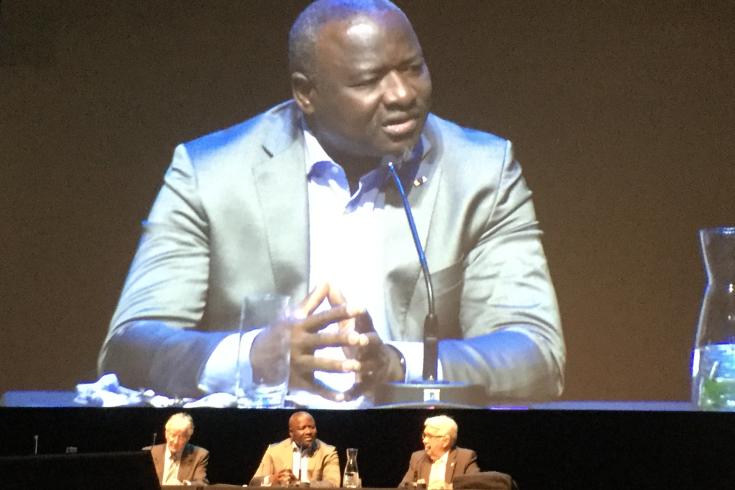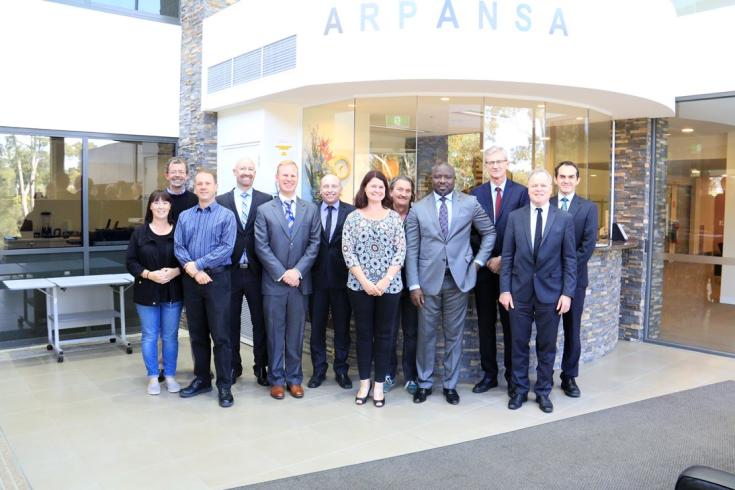Ctbt discussed at 15th World Congress on public health in Melbourne
From 6-8 April 2017, CTBTO Executive Secretary Lassina Zerbo visited Melbourne and Canberra, Australia.

Executive Secretary Lassina Zerbo delivers address to 15th World Congress on Public Health in Melbourne.
“Apart from detecting nuclear explosions, these [radionuclide] stations will also register the dispersion of radioactivity stemming from other sources anywhere in the world, for example from nuclear power plant accidents.”

Roundtable discussion at the Department of Foreign Affairs and Trade (DFAT) in Canberra.

Roundtable discussion at the Strategic & Defence Studies Centre (SDSC), Australian National University (ANU) in Canberra.
“Without the Treaty in force, there is no guarantee that nuclear testing, and a related arms race will not resume. The impact of such a scenario would be disastrous, not only for international security but also in terms of human health and the environment.”
Zerbo visited two of the facilities: RN04 (Radionuclide with Noble Gas Detection Station) and RL02 (Australian Radiation Laboratory Melbourne).
In Canberra, the Executive Secretary also met with Professor Gareth Evans, Chancellor of ANU (and former Foreign Minister of Australia).

ARPANSA site visit by CTBTO Executive Secretary Lassina Zerbo in Melbourne.
"Better be an optimist and be proved wrong at times, than be a pessimist and always be right.”
As one of the 44 so-called Annex 2 countries listed in the Treaty whose ratification is necessary for its entry into force, Australia signed the CTBT on 24 September 1996 and ratified the Treaty on 9 July 1998, the fifteenth signatory State to do so. Australia currently hosts 21 monitoring stations of the global verification regime that the CTBTO is putting in place to monitor and verify compliance with the Treaty. The 22nd station, the last, is currently under construction.
Australia also has a history of nuclear testing. During the 1950s and 1960s, nuclear tests were carried out in the Monte Bello Islands off the Western Australian coast, and at Emu Field and Maralinga in South Australia.
Link to the interview of the Executive Secretary conducted by the United Nations Information Centre (UNIC) Canberra
Link to Sydney Morning Herald article
12 Apr 2017